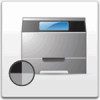Lexmark Monochrome Laser Complete Printer Reference (1.7 MB) - Page 175
Identifying the download target, Downloading resources
 |
View all Lexmark Monochrome Laser manuals
Add to My Manuals
Save this manual to your list of manuals |
Page 175 highlights
Identifying the download target Before downloading a file to flash memory or disk, you must first identify the device targeted to receive the downloaded resources. This process of identifying the device target is sometimes referred to as Resource Data Collection mode. Any device you place into this mode becomes the target for all files supported by flash memory or disk that you download to the printer. You can select the download target through the data stream, from MarkVision, or by using the operator panel. To use the operator panel, select the Download Target menu item from the Setup Menu. Selecting Flash or Disk places the device into Resource Data Collection mode and prepares it to receive resources you want to download. After downloading resources, you must reset the Download Target to RAM. The printer does not write the files to the designated device until you complete this step. If you're using MarkVision to download resources, MarkVision automatically resets the download target. Downloading resources To download files: 1 Set the download target to the appropriate device. (See "Identifying the download target.") 2 Download the files. a The printer checks for free space on the device. When the complete file is in printer memory, the printer determines the size of the file and the amount of memory required to store it on flash or disk. If there is not enough memory available on the device, no data is written and an error message is displayed. This ensures that no partial files are written to the device. Type 3 fonts, however, are treated as normal PostScript programs and dictionaries. They are written directly to flash or disk using PostScript, without first checking for space on the device. b The printer writes the file to the device. 3 Set the download target back to RAM. Managing memory 175















